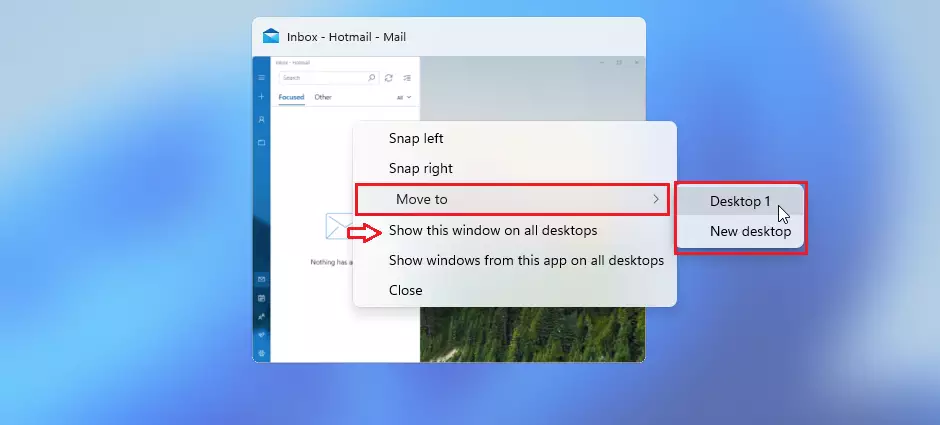This article describes Task View in Windows 11.
Task view allows users to create virtual desktops or workspaces for organizing apps and tasks efficiently. You can establish multiple workspaces that function like separate virtual desktops.
You can use Task View to help organize your work, which reduces clutter and makes your desktop easier to navigate. If you tend to have many apps open simultaneously and want to separate them by tasks, utilizing virtual desktops or workspaces can be very helpful.
You can organize your workspace by keeping all your communication apps, like email and chat programs, on one virtual desktop, while dedicating a different desktop for your work.
Create virtual desktops via keyboard shortcuts
Task View is automatically added to the Taskbar in Windows 11. However, a keyboard shortcut can quickly create a new virtual desktop.
To do that, press the CTRL + WIN + D on your keyboard to create a new virtual desktop.

You can create as many virtual desktops as you want using your keyboard.
Create a virtual desktop from the Taskbar
As mentioned above, Task View is automatically added to the Taskbar in Windows 11. To access Task View, click the Task View icon on the Taskbar.

To add a virtual desktop, click the blank white screen to the right with the Plus sign ( + ). You can then select each virtual desktop and open apps and tasks. Do this to another workspace to organize your work.
To remove a virtual desktop, close its windows, and all the apps on that desktop will automatically shift to the next workspace. There is always at least one workspace available.
You can move apps between desktops by clicking Task View on the Taskbar. Then, right-click on the apps to select the option to move them to another desktop or show them on all desktops.

This workspace now contains the app you moved.

This is how one uses virtual desktops or workspaces to organize applications and files on Windows 11. I hope this helps you get your desktop organized.
Conclusion:
- Task View in Windows 11 provides an efficient way to manage apps and tasks through virtual desktops.
- Users can create multiple workspaces for group-related applications, enhancing productivity and organization.
- Keyboard shortcuts like CTRL + WIN + D allow for quick virtual desktop creation.
- The Taskbar offers easy access to Task View for adding, removing, and organizing virtual desktops.
- Moving applications between desktops is straightforward, helping tailor your work environment to your needs.
- Virtual desktops can significantly reduce desktop clutter, making navigating and focusing on specific tasks easier.

Leave a Reply